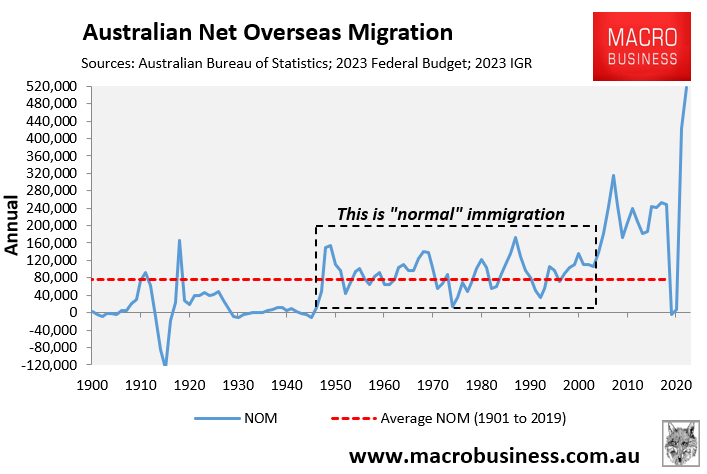Last year, we read multiple headlines claiming that investors were selling their properties, which was supposedly exacerbating the rental crisis by reducing stock.
For example, PropTrack Director of Economic Research Cameron Kusher, warned in November that “investors continue to exit the market, which is keeping the overall stock of rental properties low”.
Ray White’s September real estate report also claimed that “nationally, investors continue to exit the market”.
The AFR’s Nila Sweeney reported this week that mounting pressure from higher mortgage repayments and increasing government intervention could be driving investors out of the market, “potentially shrinking the already low rental supply further and fuelling another lift in rental growth”.
“The number of ex-rental homes listed for sale jumped by 30% over the year to January, lifting the total to 11,950 nationwide according to data from property analytics firm Suburbtrends”, Sweeney reports.
“The proportion of investor-owned listings has ballooned to 18%, up from 16% a year ago”.
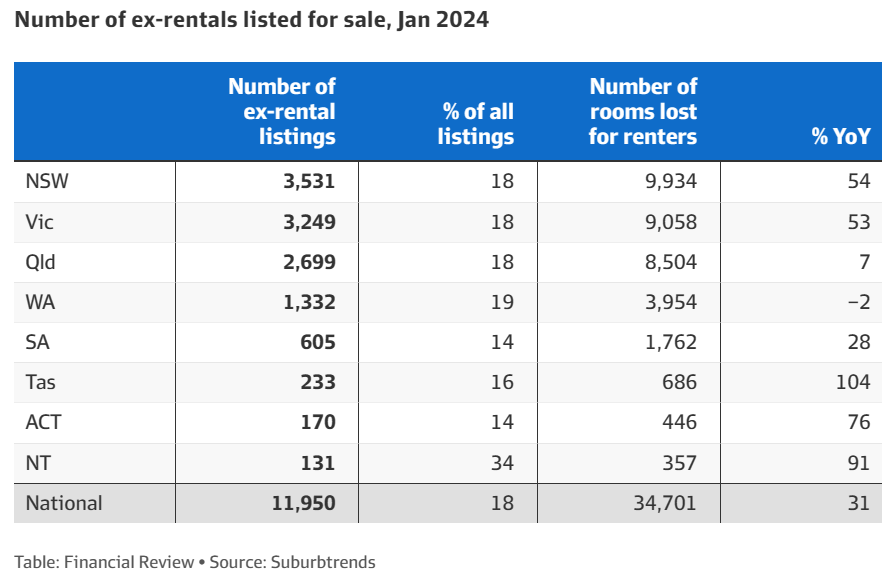
“The spike in ex-rental listings has led to 34,701 bedrooms “lost” in the rental market last month, highlighting the impact of an investor exodus to the rental market according to Kent Lardner, director of Suburbtrends”, Sweeney reports.
“We need to incentivise investors to keep their properties within the rental market”, Lardner claims.
“It’s about creating a sustainable ecosystem that can support both property owners and renters”, he says.
CoreLogic’s research director, Tim Lawless, also played into the investor exodus theme.
“Given the large difference between servicing costs and rental income, there is a good chance that a growing portion of investors are feeling some financial pain and may need to sell their property”, Lawless told The AFR.
“We could also be seeing investor confidence being dented amid a changing investment landscape. Investors now enjoy lower tax deduction benefits and some tenancy reforms are taking some control away from them. Talk of changes to taxation policies such as negative gearing could also be giving investors the jitters”.
The truth is that although the proportion of listings from investors has risen to 18%, the share of mortgages going to investors has risen to 36%:
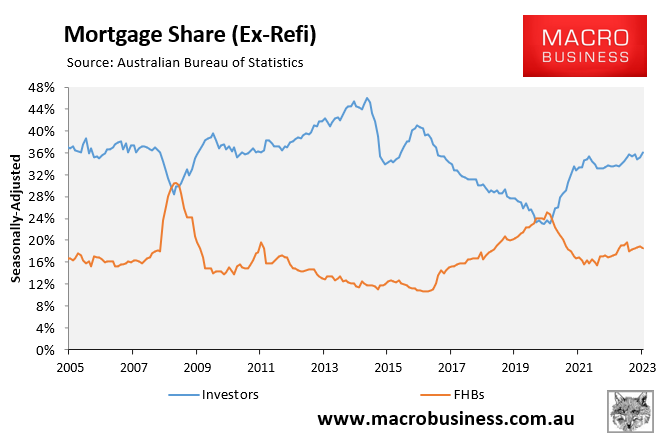
This follows 20% growth in new investor mortgage commitments in 2023:
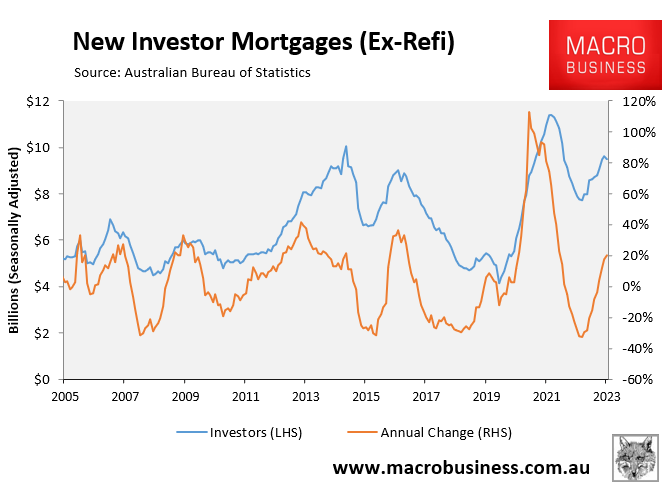
This suggests that the overall share of investors in the housing market continues to grow.
As is so often the case, SQM Research managing director, Louis Christopher, was the only one making sense in The AFR article, noting that the recent rise in investment lending indicated a return by investors to the market.
Nevertheless, Australia still faces a worsening rental crisis because of the federal government’s mass immigration policy, which is growing the population much faster than homes can be built.
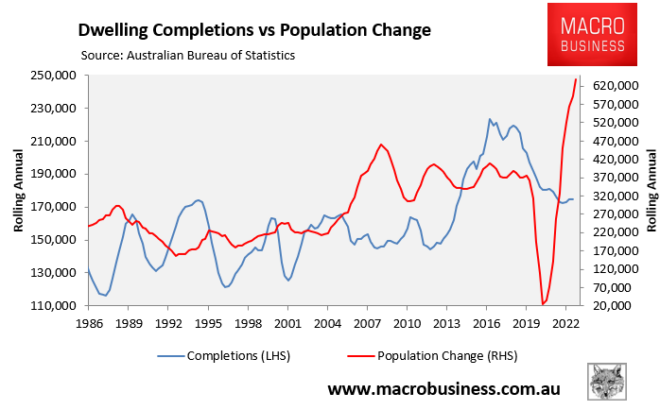
“There’s still going to be a rental shortage because of the surge in demand driven by a very strong migration growth”, Christopher said.
In short, there is no investor exodus.
Anyone who is genuinely concerned about the rental crisis should be calling on the federal government to slash net overseas migration to historical levels of below 120,000 people year.
